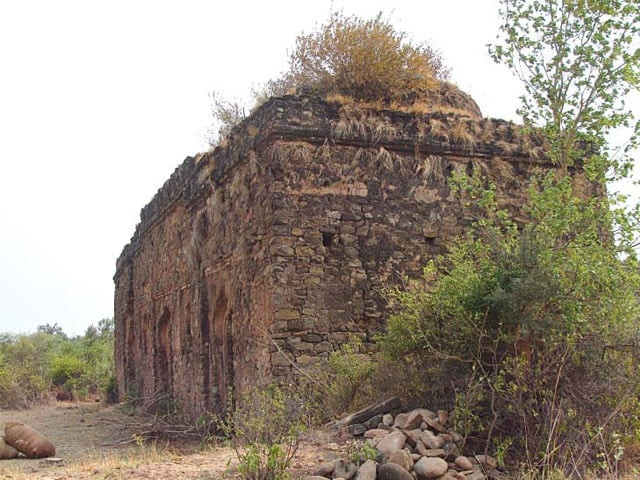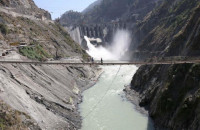Mai Qamro’s mosque: A neglected monument
Villagers don't have enough money to renovate the historical mosque of their ancestors, says resident.

Bagh Jogian, a small village, can be reached by way of Darwal and Bhimber Tarar from where a road leads to Bagh Jogian. This mosque is situated west of Bagh Jogian village near the right bank of Soan River facing the formidable fort of Pharwala on the left bank. The mosque offers a spectacular view of the fort.
Haseeb Kiyani, a resident of Pharwala, said that the “place is notorious for absconders who frequently take refuge in the mosque. The villagers have no money to renovate the historical mosque of their ancestors. It was the duty of the state to stop the destruction of national heritage.
The mosque is believed to have been built by Mai Qamro, wife of Hathi Khan Ghakkar, a scion of the Ghakkar dynasty in which women occupied a prestigious and influential position. Some women like Mai Qamro and Rani Mangho acquired renown in the field of arts and architecture. They were also famous for their welfare work like digging wells, building step wells (Baolis) and caravan sarais.
Rani Mangho, the wife of Sultan Sarang, established his capital at Dhan Gali in Kallar Syedan while the Sultan had his base in Rawat, where she is believed to have built a number of religious and secular buildings including a mosque, an Eidgah and a fortress palace. Remains of all the buildings built by Rani Mangho can still be seen in and around Dhan Gali in Kallar Syedan which fell in her dominion.
Mai Qamro mosque is a great specimen of Ghakkar architecture which appears to have been built in early 16th century. The mosque is built on a rectangular plan and crowned with three squat domes. The southern dome of the mosque has caved in but the two others are in fairly good condition. It is noted for its three arched-entrances. The central entrance is flanked by two recessed arches which lend an amazing beauty to the façade of the structure. Above the arched entrance, one finds a beautiful cut-brick ornamentation. Such embellishment cannot be found elsewhere in Potohar. Dressed stone has been used to construct the mosque. Formerly it was plastered, traces of which are still visible on the façade of the mosque.
Parts of the boundary wall of the mosque have survived the ravages of time. The northern boundary is still standing. The remains of the southern and eastern walls are also visible. The mosque itself is in an appalling condition which the locals have turned into a barn. Even the courtyard of the mosque is littered with bags of haystack. The northern and western walls of the mosque have developed cracks. The southern arched entrance is also crumbling. Vegetation has grown over the roof and domes of the mosque.
Raja Shafiq, a notable of Bagh Joghian, said that he objected to using the mosque as a barn but the villagers do not listen.
Shabnam Bahar, a director of Research and Development at Bahria University, Islamabad says “Accessibility to the mosque is the main problem. There should be transport facilities for the tourists who intend to visit the mosque”.
This place has great tourist potential but lacks necessary security for visitors who at present need to be careful and take along a local for company as the place are used by criminal elements.
The author is Research Anthropologist at Pakistan Institute of Development Economics (PIDE), Islamabad. He may be contacted at zulfi04@hotmail.com
Published in The Express Tribune, January 21st, 2011.



















COMMENTS
Comments are moderated and generally will be posted if they are on-topic and not abusive.
For more information, please see our Comments FAQ